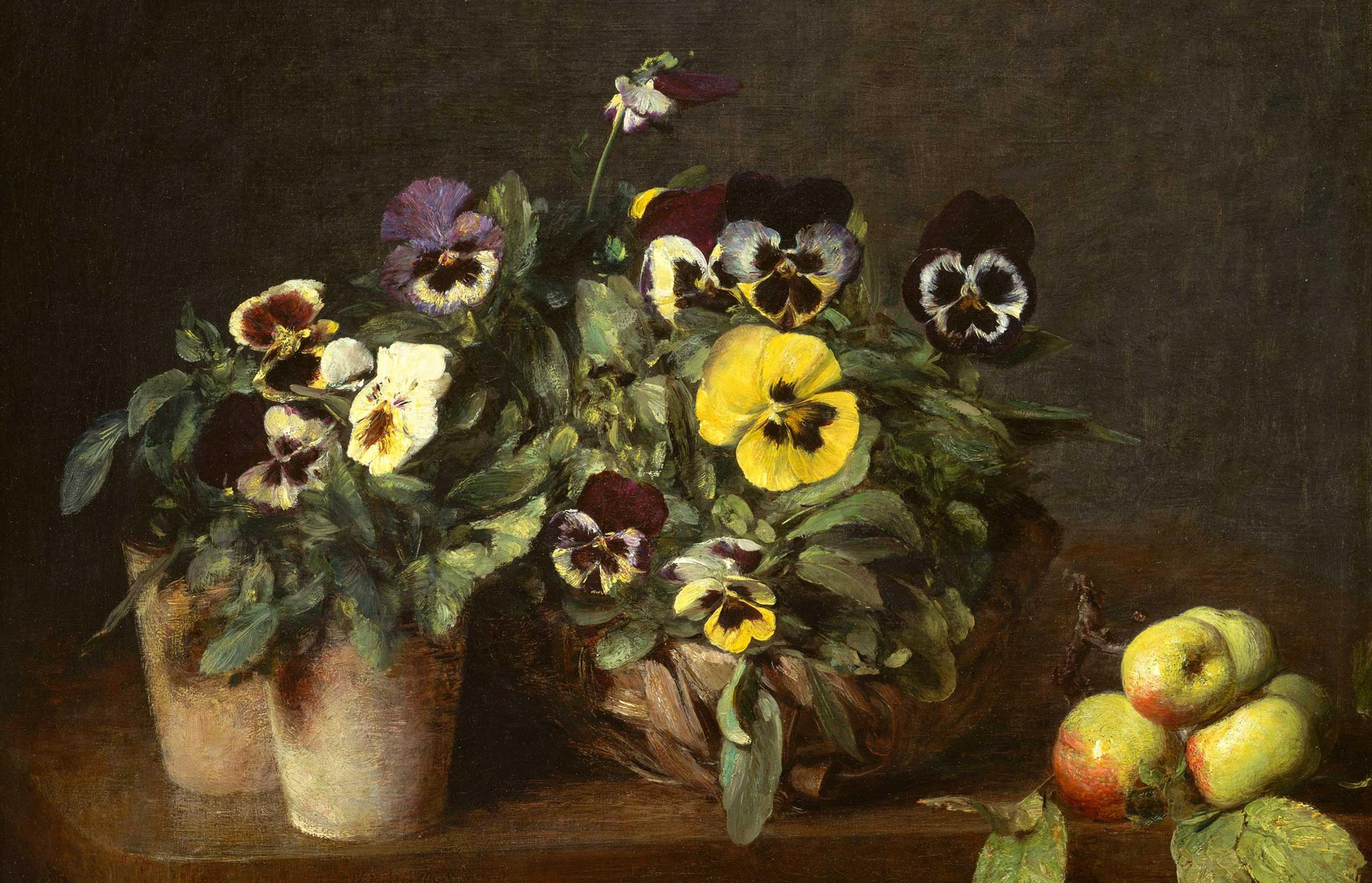According to Roman fable, the pansy was originally white but was colored purple when struck by one of Cupid’s arrows. King Arthur and his round table used them to divine the future. Plucking a pansy petal, the knights would look for secret signs. Four lines: hope. Thick, left leaning lines: a life of trouble. Seven lines: constancy of love. Eight: fickleness. Nine: a change of heart.
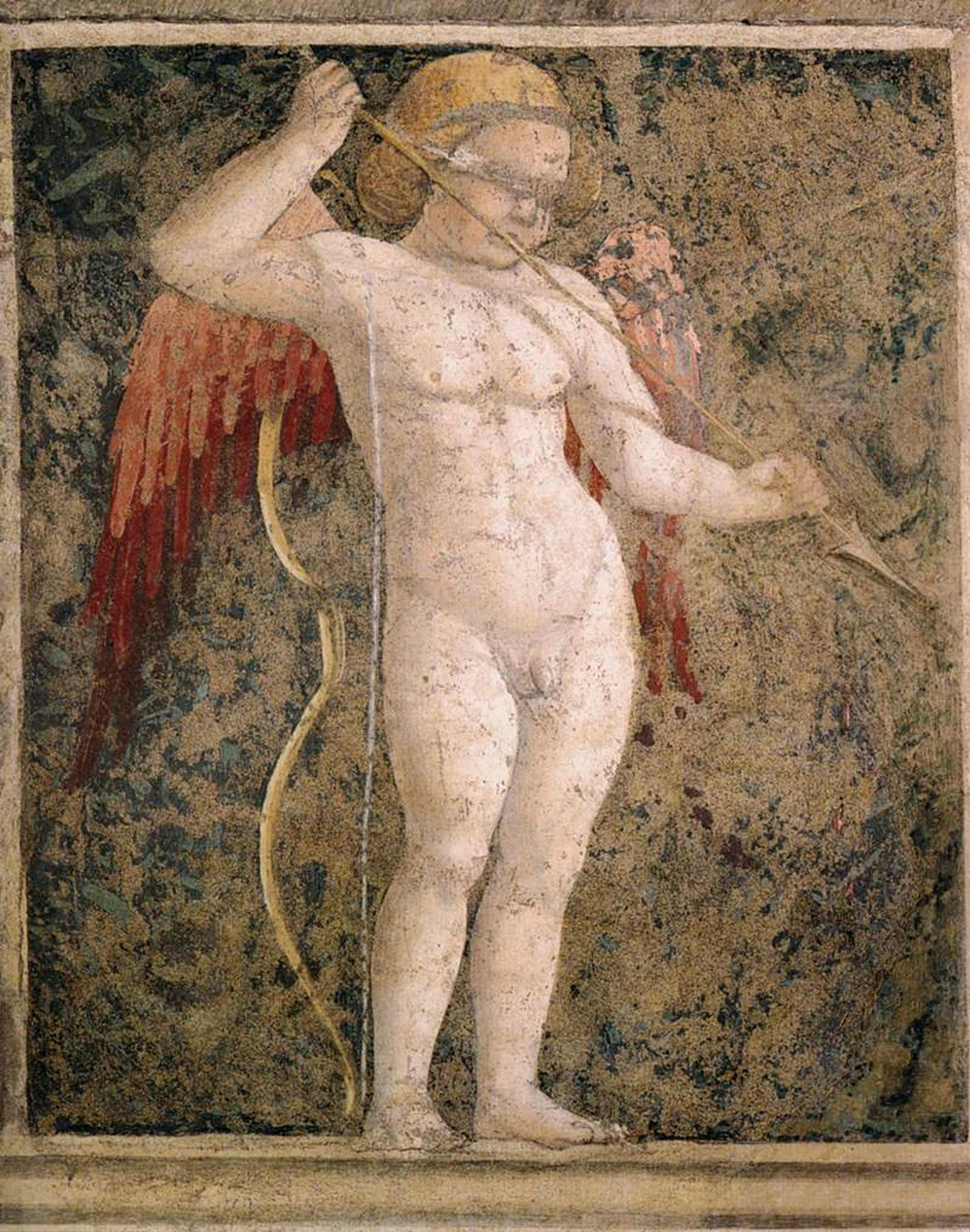
“Cupid Blindfolded” by Piero della Francesca, c. 1452-1466.
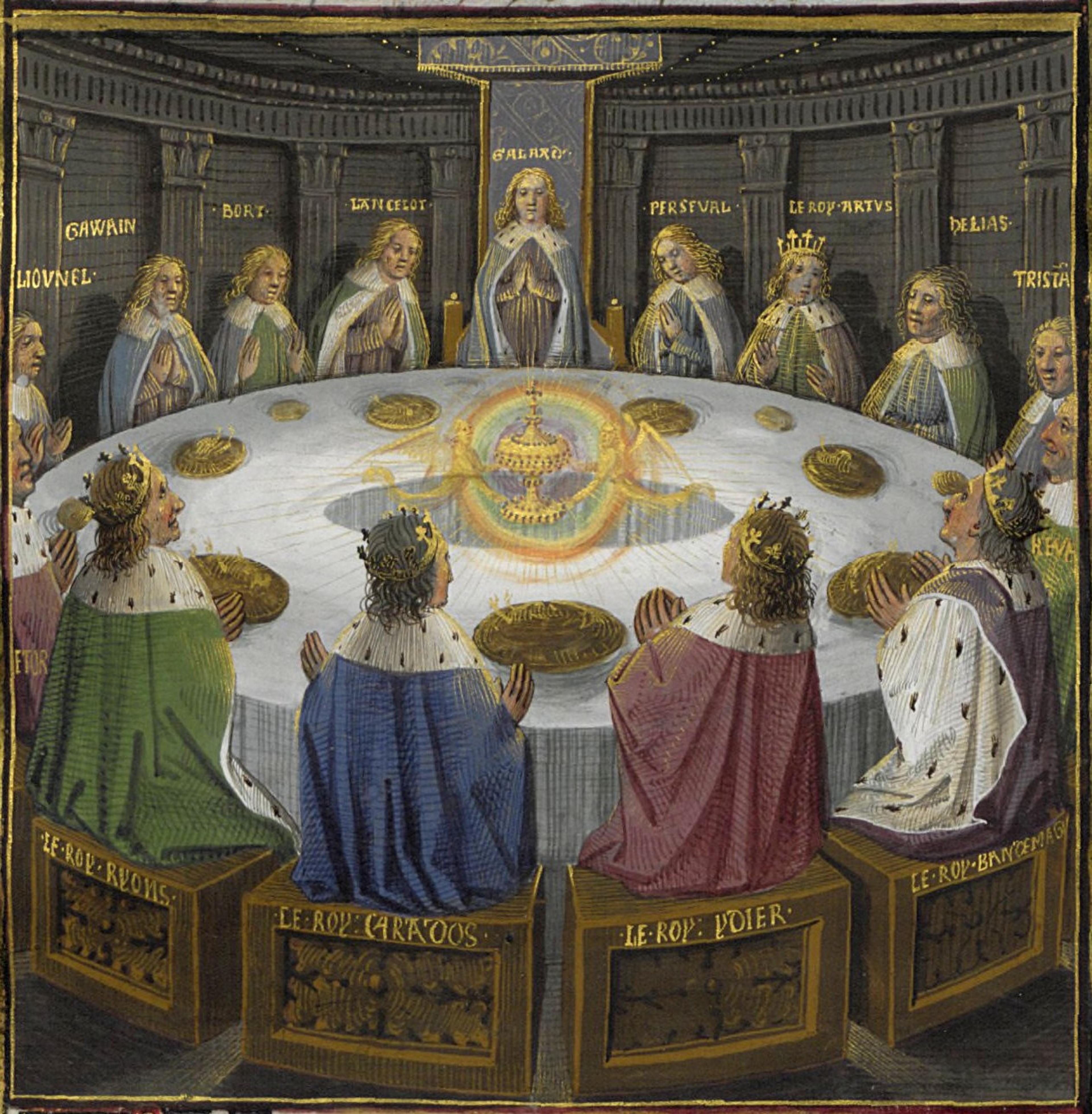
King Arthur’s knights, gathered at the Round Table, see a vision of...
In the 16th century, Shakespeare wrote often of these five-petaled flowers. In A Midsummer Night's Dream, Oberon and Puck scheme to put drops of pansy juice in Demetrius’ eyes to make him fall in love with the first person he sees upon waking.
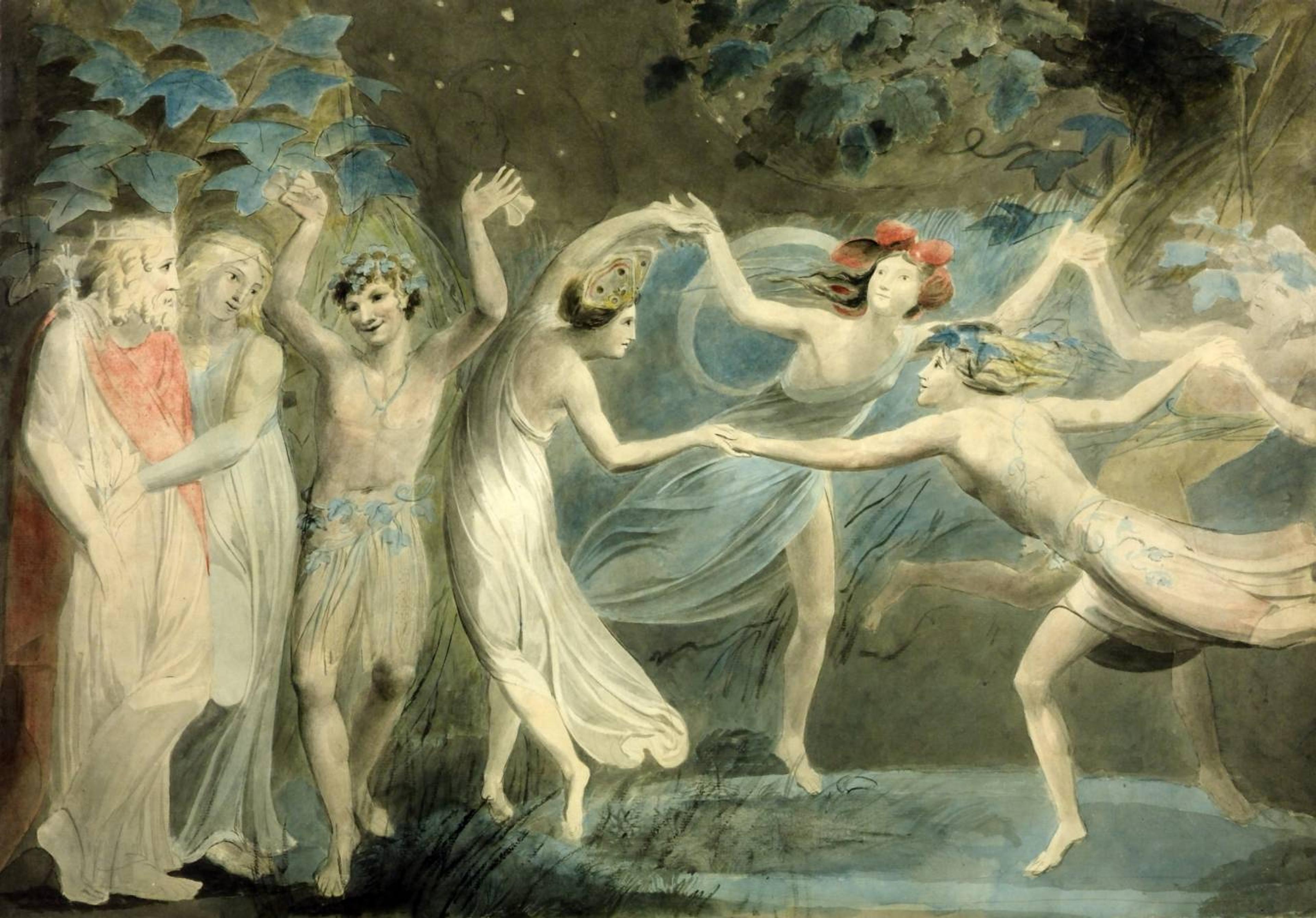
“Oberon, Titania and Puck with Fairies Dancing” by William Blake, c. 1786.
In HamleT, a deranged Ophelia distributes pansies, saying “these are pansies, and they are for thoughts.” This association came about because the name pansy stems from the French word pensée, meaning “thought.” Pansies are said to have been named this because the face of the flower resembles a human face, and in the mid-to-late summer it nods forward as if in deep thought.
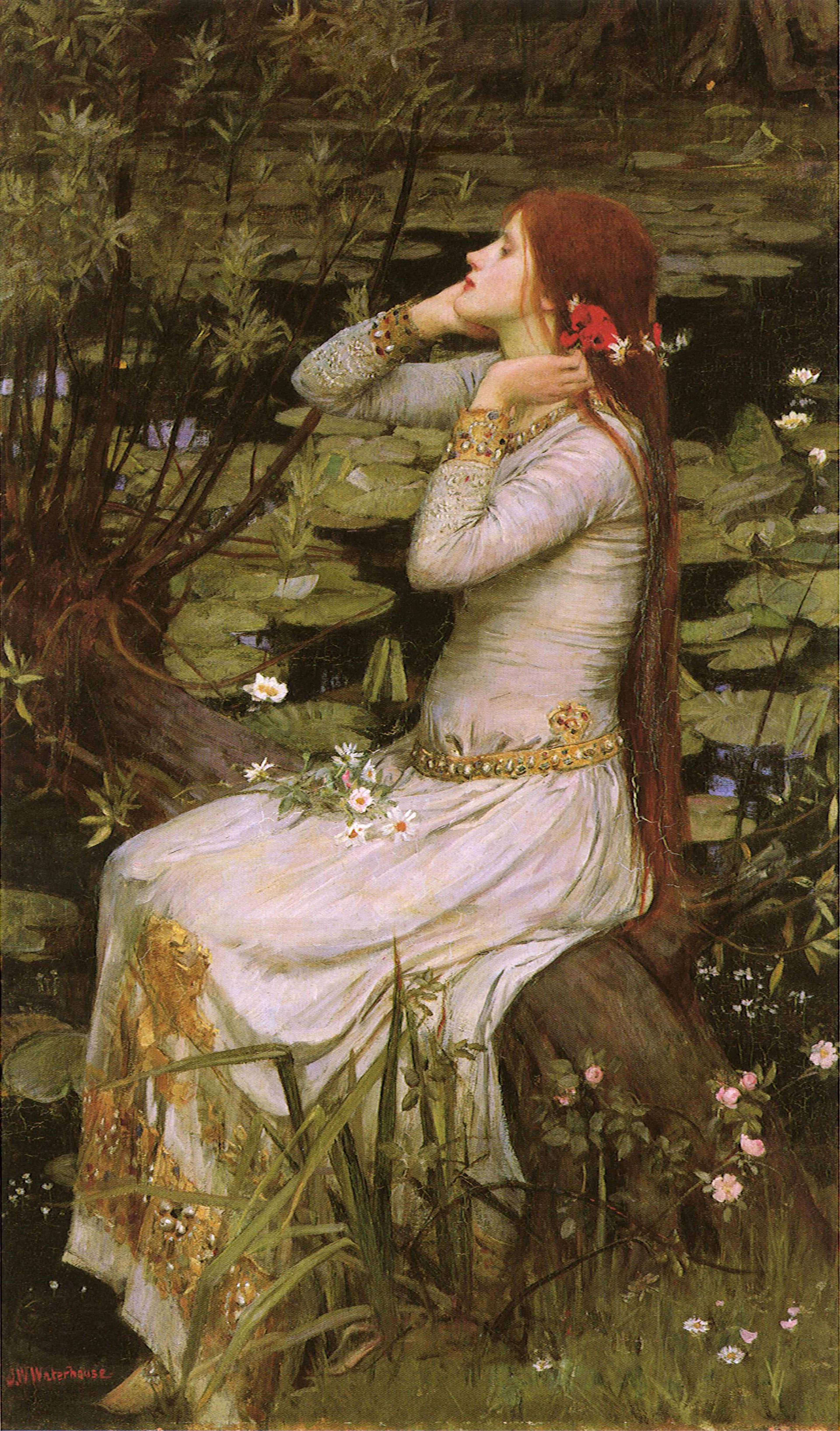
"Ophelia" by John William Waterhouse, 1894. Many portrayals of Hamlet's tragic character...
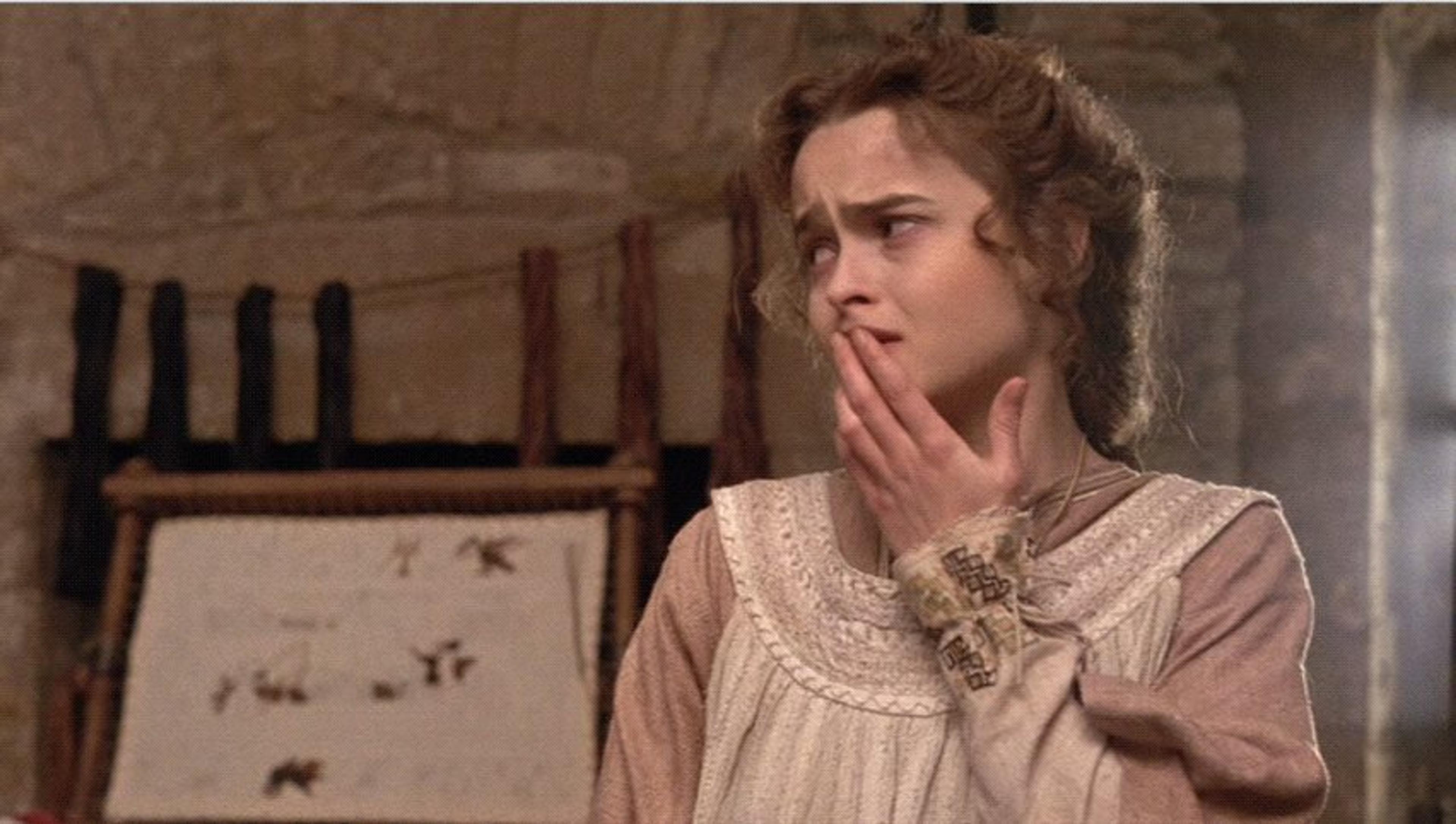
Helena Bonham Carter as Ophelia in Franco Zeffirelli's 1990 film "Hamlet".
By the Victorian era, the pansy was widely known to symbolize thoughts of love.
Wild pansy was also adorably known by the alternative names Heartsease, Come-and-Cuddle-Me, Heart’s Delight, Jack-Jump-Up-and-Kiss-Me, Flame Flower, and the slightly NSFW “Pink of my John.”

“Heartsease” botanical print.
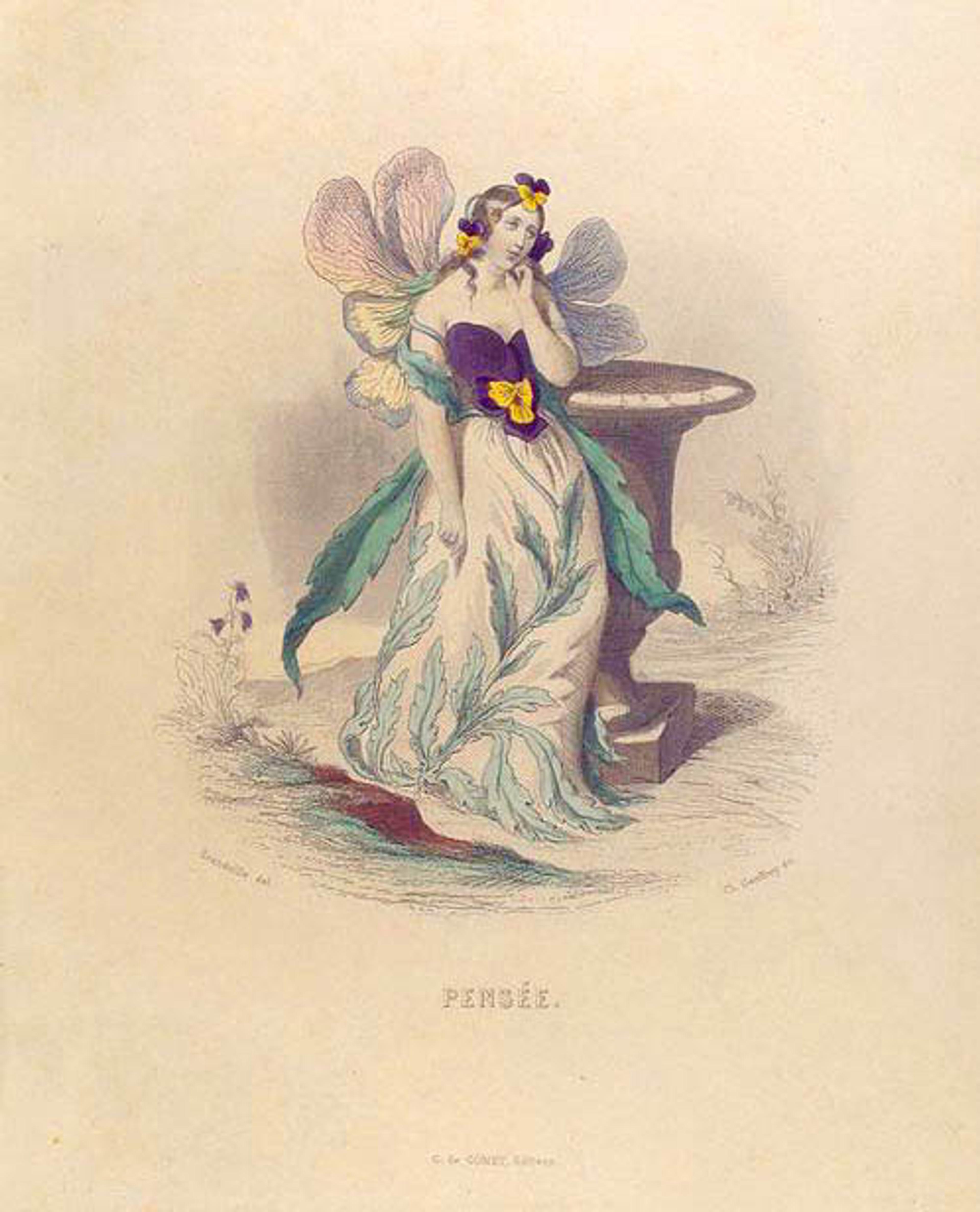
“Pensée” from Fleurs Animées by J.J. Grandville, c. 1803-1847.
Floriography — the coded language of flowers — was wildly popular among Victorians who lived in a reserved society where expressing your feelings was a MAJOR social faux pas. Floriography allowed them to communicate their desires without saying anything at all. One of the most popular flowers to express your feelings with was, of course, the pansy.
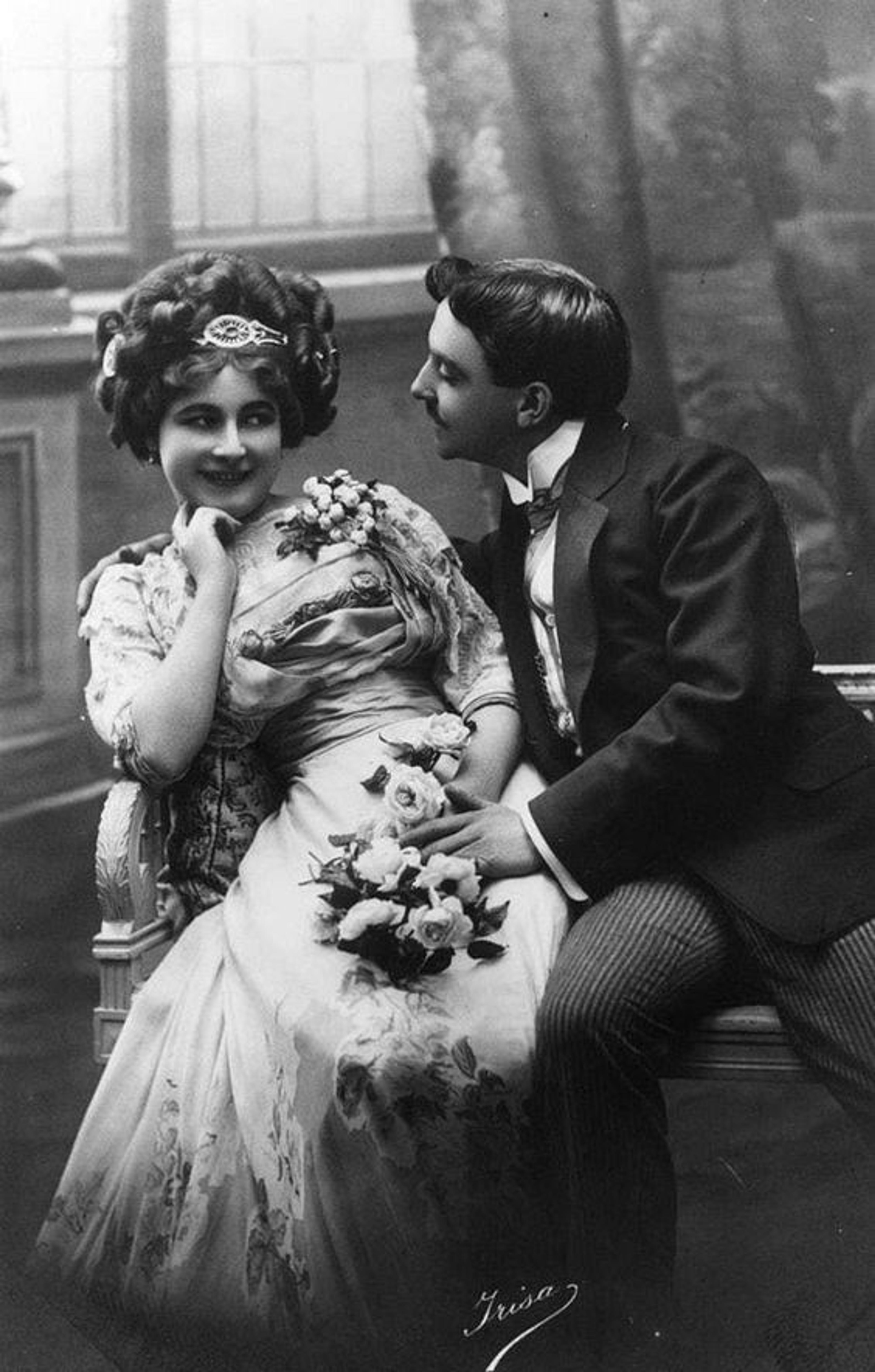
A Victorian couple courting, c.1890.
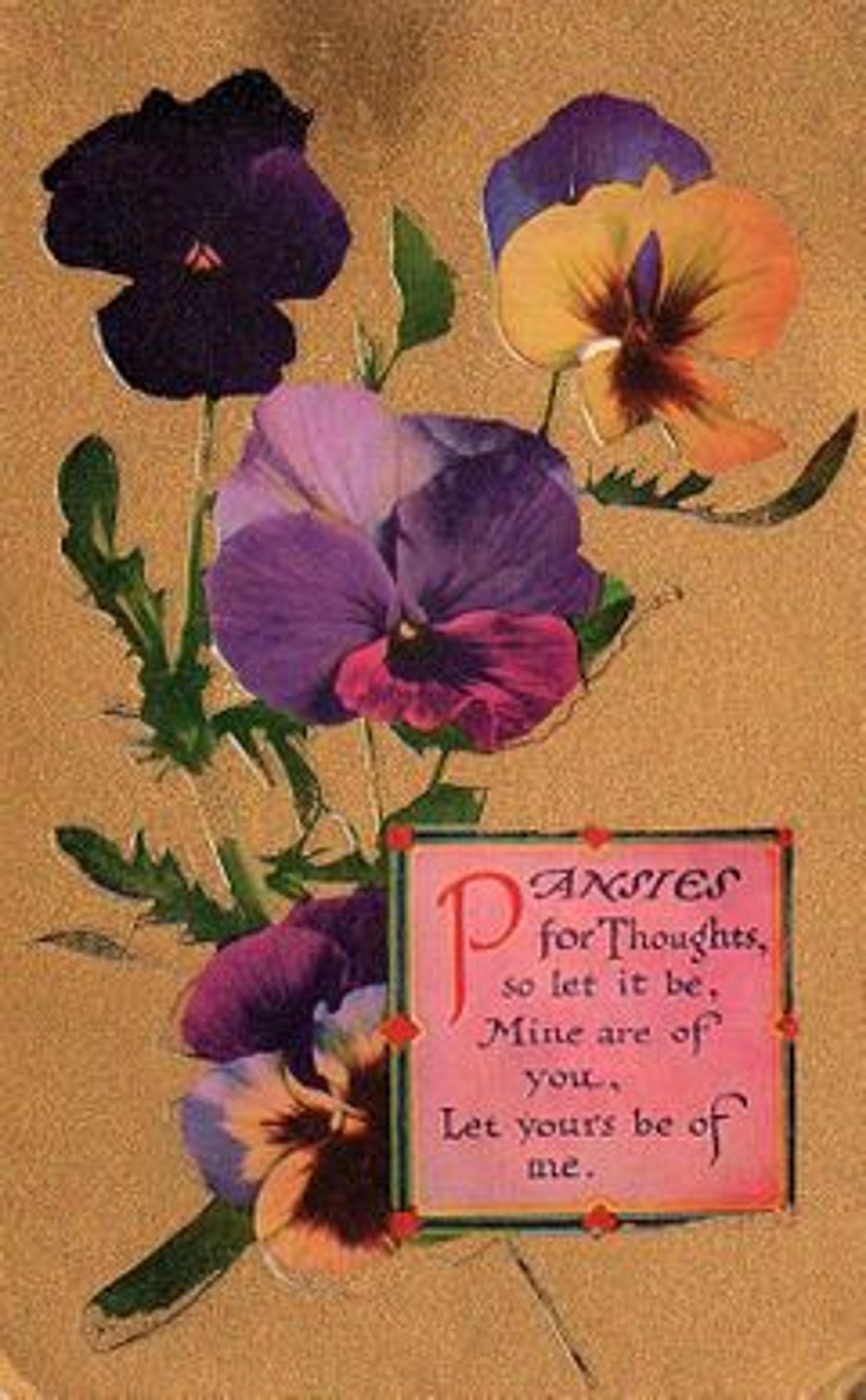
An antique floral greeting postcard, 1910.
One might gift a bouquet of pansies to a lover to let them know you’re thinking of them, or a piece of jewelry in the likeness of one.
